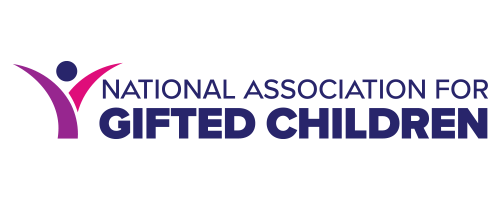Climbing to the Top of Differentiation Mountain: Building Strong Foundations for Gifted Learners
By Jessica Potts and Tara Toft, NAGC Curriculum Studies Network Chair and Co-Chair
Differentiation has long been one of the most discussed topics in education. Some hail it as a silver bullet that will fix all of our woes, while others see it as a Sisyphean task that is impossible to pull off in mixed ability classrooms. The truth, as with most things in education, lies somewhere in between.
A quick search of the terms “differentiation” and “differentiated instruction” in Gifted Child Quarterly alone yielded 176 results, and that’s only for articles published since 2015. For gifted education, this attention is particularly warranted. As districts across the country scale back or even eliminate their gifted programs, differentiation often becomes the only way that gifted students can access appropriate levels of challenge in regular education classrooms. For these reasons, the Curriculum Studies Network will continue to dedicate considerable time and effort to support educators in developing differentiation pedagogy and practice.
Why Differentiation Is So Hard
The challenges of differentiation are not new. Holly Hertberg-Davis (2009) identified several common barriers:
-
Differentiation is time consuming, both in terms of preparation and execution.
-
Differentiation is often used more for struggling students than advanced learners.
-
Differentiation often bumps up against the pressure teachers feel to prepare for grade-level standardized tests.
-
Teachers receive limited training provided on differentiation techniques.
Jim Delisle famously decried these concerns in his widely read articles “Differentiation Doesn’t Work” (2015) and “Sorry, Differentiation Still Doesn’t Work” (2015). The titles of his articles and Delisle’s full messages, however, are not the same. What he is actually saying is differentiation is not feasible in classrooms with wide berths of student readiness. It’s just too vast to do well. He is advocating for more homogeneous rostering and effective professional learning coupled with systemic supports in schools. Otherwise, differentiation will continue to offer false promises and dashed hopes.
What Differentiation Is—and What It Isn’t
Another reason that differentiation can be challenging is that teachers are not given much training regarding differentiation, and it can sometimes be difficult to define. Is it giving students individualized lessons? Is it a method of tracking? Is it all about student choice? When we break it down to its essential elements, the distinctions are clear:
Differentiation IS:
-
Responsive instruction: Compacting, pacing, and adding depth and complexity based on students' readiness, needs, and interests.
-
Flexible and dynamic: Shifting seamlessly between varied grouping structures, strategies, and techniques according to student growth.
-
Intentional and data-informed: Rooted in the assessment and planning cycle, and cultivated through relevant feedback and reflection.
-
Student-centered talent development: Culturally responsive opportunities for all learners to demonstrate achievement and growth across all content areas.
Differentiation is NOT:
-
One-on-one tutoring, nor is it fully individualized lesson planning for each student.
-
Extra busywork: Giving advanced students extra tasks or free time while other students “catch up.”
-
Fixed tracking or peer dependence: Grouping is not permanent, but ebbs and flows with students’ needs within varied content and contexts, and it is not relying on gifted students as classroom helpers or tutors.
-
Something teachers do instinctively: Instead of capitalizing on teachable moments, it requires intentionality and a deep understanding of both students’ needs and content standards to create them.
Having a clear idea of what we mean when we say “differentiation” can go a long way toward adoption.
Differentiation vs Differentiated Instruction
One simple but significant barrier is the tendency to use the terms differentiation and differentiated instruction interchangeably, contributing to ineffective implementation (Scarparolo & Porta, 2025).
-
Differentiation is the philosophy. It is the belief that students enter classrooms with varied levels of readiness, interests, and learning profiles, requiring flexible instruction to meet those differences.
-
Differentiated Instruction is the practice. These are the strategies teachers utilize, like tiered assignments, flexible grouping, curriculum compacting, and choice boards.
This difference matters. When teachers charge headlong into differentiated instruction strategies before embracing differentiation as a philosophy and belief-system, they will only frustrate themselves. None of these strategies are sustainable if the classroom foundation isn’t steady.
Scaling the Mountain
All too often, teachers head straight to the top of the mountain. They reach for strategies before laying the groundwork that will make those strategies work. It’s the old adage: if you fail to plan, you plan to fail.
Wim van de Grift’s (2007, van de Grift et al., 2014) Six Domains of Teacher Quality helps to explain why. In this framework, Safe Learning Environment and Classroom Management are at the base. The other domains of Quality of Instruction, Activating Teaching Methods, and Teaching Learning Strategies rest on the foundation of the first two, while Differentiated Instruction is at the peak. It comes last, not first.
By focusing solely on differentiated tasks, teachers are attempting to start at the top of the mountain, which may contribute to the belief that differentiation is impossible.
Maslow Before Bloom
The climb requires both social-emotional learning (SEL) and curricular knowledge. In recent years, we’ve heard the phrase “Maslow Before Bloom,” meaning that meeting students’ psychosocial needs must precede meeting their intellectual needs. That tracks when building a strong foundation for differentiation. Children don’t care what you know until they know that you care.
The base of Maslow’s Hierarchy of Needs includes Physiological Needs, Safety Needs, and Belongingness/Love Needs, all of which align with the domains Safe Learning Environment and Classroom Management. The CASEL Framework (2020) offers an effective way to think about how Maslow’s principles can pave the way for effective differentiated instruction.
Many gifted students experience asynchronous development, perfectionism, imposter syndrome, and other social challenges, making this need even greater. Only when students feel safe and supported can they display the kind of curiosity and intellectual risk-taking necessary to effectively engage with differentiated tasks.
Teachers can set clear expectations for all tasks and offer flexible seating or breaks for students who need support with self-regulation. Teachers can prepare students for collaborative learning practices—which are a big part of differentiation—by fostering relationships and social skills. In essence, Maslow describes the conditions that need to be met before differentiation can happen while CASEL offers the skills that teachers need to foster in order to create those conditions in the classroom.
Conclusion
Differentiation has its share of critics, and that’s fair. It is not an easy road. But just as we encourage our students to persevere at challenging tasks, so must we resist the urge to dismiss differentiated instruction as an impossible dream and instead, approach it from a different perspective.
When teachers focus on building a strong foundation in their classroom—safe environments, predictable routines, and deep curricular knowledge—they are better equipped to plan and deliver differentiated instruction strategies. Like climbing a mountain, this process requires preparation, endurance, and a whole lot of patience.
References
Collaborative for Academic, Social, and Emotional Learning. (2020). CASEL’s SEL framework: What are the core competence areas and where are they promoted? Collaborative for Academic, Social, and Emotional Learning. https://casel.org/casel-sel-framework-11-2020/
Delisle, J.R. (2015, January 6). Differentiation doesn’t work. Education Week. https://www.edweek.org/teaching-learning/opinion-differentiation-doesnt-work/2015/01
Delisle, J.R. (2015, June 28). Sorry…differentiation still doesn’t work. SENG. https://sengifted.org/delisle-sorry/
Hertberg-Davis, H. (2009). Myth 7: Differentiation in the regular classroom is equivalent to gifted programs and is sufficient: classroom teachers have the time, the skills, and the will to differentiate adequately. Gifted Child Quarterly, 53(4), 251-253. https://doi.org/10.1177/0016986209346927
Scarparolo, G., & Porta, T. (2025). Examining the Australian educational landscape of differentiation through document analysis. The Australian Educational Researcher, 52(3), 2137–2161. https://doi.org/10.1007/s13384-025-00805-9
van de Grift, W. (2007). Quality of teaching in four European countries: a review of the literature and application of an assessment instrument. Educational Research, 49(2), 127-152. https://doi.org/10.1080/00131880701369651
van de Grift, W., Helms-Lorenz, M., & Maulana, R. (2014). Teaching skills of student teachers: Calibration of an evaluation instrument and its value in predicting student academic engagement. Studies in Educational Evaluation. http://dx.doi.org/10.1016/j.stueduc.2014.09.003


